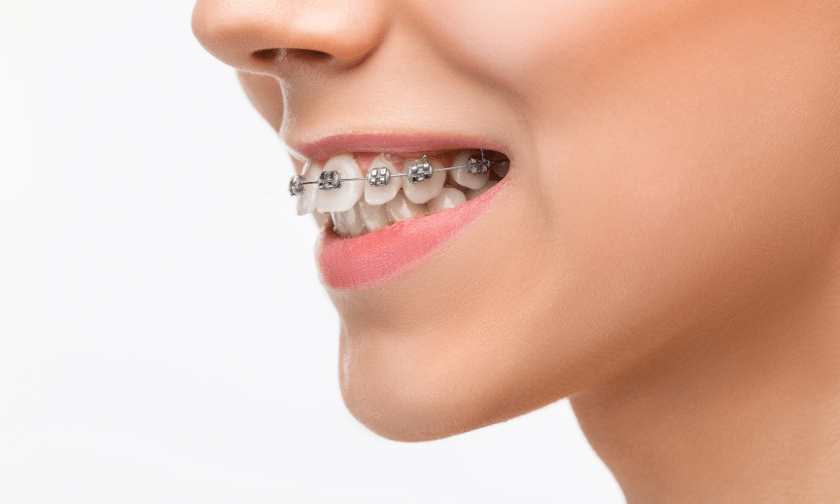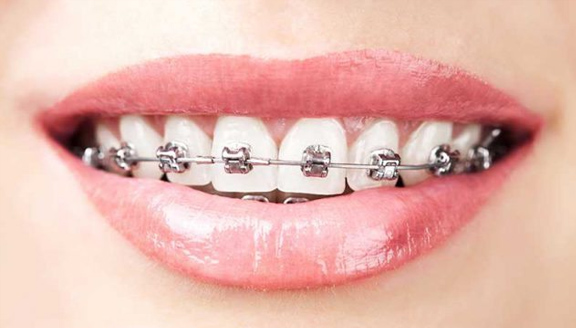Contents
You may not realize it, but having straight teeth goes beyond just a beautiful smile. The importance of braces in straightening teeth goes far beyond aesthetics. Braces appliances work their magic by gently applying pressure to your teeth over time, gradually moving them into their proper positions. This not only improves the alignment of your teeth, but also enhances your overall oral health. Discover the transformative power of braces and how they can make a lasting impact on your smile.
Benefits of Braces
Straightening Crooked Teeth
One of the primary benefits of braces is their ability to straighten crooked teeth. If you have misaligned teeth, braces can gradually shift them into their proper position, creating a more aligned and aesthetically pleasing smile. Straight teeth not only enhance your appearance but also improve your self-confidence.
Correcting Bite Issues
Braces are also effective in correcting bite issues. Whether you have an overbite (where your upper teeth overlap the lower teeth), an underbite (where your lower teeth protrude in front of the upper teeth), or a crossbite (where some teeth are misaligned sideways), braces can help align your bite properly. Correcting bite issues not only improves your smile but also enhances your overall oral health.
Closing Gaps Between Teeth
Another benefit of braces is their ability to close gaps between teeth. If you have excessive spacing between your teeth, braces can gradually bring them closer together, resulting in a more even and harmonious smile. Closing the gaps between teeth not only improves your appearance but also helps prevent food particles from getting stuck in those spaces, reducing the risk of tooth decay and gum disease.
Improving Oral Health
In addition to the cosmetic benefits, braces also contribute to improving your overall oral health. Misaligned teeth can be harder to clean properly, increasing the risk of plaque buildup, tooth decay, and gum disease. By straightening your teeth with braces, you can improve your oral hygiene routine and decrease the likelihood of developing these dental issues. Additionally, correcting bite problems can also alleviate stress on your jaw and reduce the chances of experiencing temporomandibular joint (TMJ) disorders.
Types of Braces
Traditional Metal Braces
Traditional metal braces are the most commonly used type of braces. They consist of metal brackets that are bonded to the front surface of your teeth and connected by archwires. Although they are visible, metal braces are highly effective and can treat a wide range of orthodontic issues. They are also the most affordable option for braces treatment.
Ceramic Braces
Ceramic braces are similar to traditional metal braces but with brackets made of tooth-colored ceramic material. This makes them less noticeable and more aesthetically pleasing than metal braces. Ceramic braces are a popular choice among individuals who desire a less noticeable orthodontic treatment option.
Lingual Braces
Lingual braces are placed on the back surface (lingual side) of your teeth, making them virtually invisible from the front. These braces are custom-made to fit each individual’s teeth and provide effective treatment while remaining hidden. Lingual braces are an excellent option for those who want to straighten their teeth discreetly.
Invisible Braces
Invisible braces, such as clear aligners, are a popular alternative to traditional braces. These custom-made, clear plastic aligners gradually shift your teeth into alignment. They are removable, making them convenient for eating and oral hygiene. Invisible braces are a great option for individuals who prefer a nearly invisible orthodontic treatment option.
Process of Getting Braces
Consultation with Orthodontist
The first step in getting braces is to schedule a consultation with an orthodontist. During this appointment, the orthodontist will evaluate your oral health, examine your teeth, and discuss your goals for treatment. They will explain the different types of braces available, their benefits, and their costs. This consultation is an opportunity for you to ask questions and address any concerns you may have.
Initial Examination and X-Rays
Once you decide to proceed with braces, the orthodontist will conduct a thorough examination of your mouth and take X-rays and impressions of your teeth. These diagnostic tools provide essential information about the position of your teeth, the alignment of your bite, and any underlying dental issues. The orthodontist will use this information to create a personalized treatment plan tailored to your specific needs.
Treatment Plan and Cost Estimation
After evaluating the examination results, the orthodontist will develop a detailed treatment plan. This plan will outline the duration of your treatment, the type of braces recommended, and any additional procedures that may be required. The orthodontist will also provide you with a cost estimation for the entire treatment process, including any necessary follow-up appointments or adjustments.
Braces Placement
Once the treatment plan is finalized, the braces placement process will begin. For traditional metal and ceramic braces, the orthodontist will bond the brackets to the front surface of your teeth using a special dental adhesive. They will then thread the archwires through the brackets and secure them in place with elastic bands. Lingual braces and invisible braces may require different placement techniques, as they are fitted to the back or made of removable aligners, respectively.
Adjustments and Tightening
Throughout your treatment, you will need to visit your orthodontist regularly for adjustments and tightening. During these appointments, the orthodontist will assess your progress, make necessary modifications to the braces, and tighten the archwires to continue guiding your teeth into their desired positions. These adjustments can cause minor discomfort, but they are crucial for the effectiveness of the treatment.
Wearing Retainer
After the braces are removed, your orthodontist will provide you with a retainer to wear. The retainer helps maintain the final alignment of your teeth and prevents them from shifting back to their original positions. Initially, you may need to wear the retainer full-time, gradually transitioning to wearing it only at night. Consistently wearing your retainer as instructed by your orthodontist is essential to ensure the long-term success of your braces treatment.
Duration of Braces Treatment
Short-Term Braces
Short-term braces refer to orthodontic treatments that focus on addressing minor cosmetic issues rather than comprehensive bite corrections. With short-term braces, treatment duration is typically shorter, ranging from several months to one year. However, the exact length of treatment will depend on your specific case and the type of braces used.
Typical Treatment Duration
In general, the average duration of braces treatment is approximately 18 to 24 months. However, some cases may require more extended treatment periods, while others may be completed sooner. Your orthodontist will give you a more accurate estimate based on the complexity of your orthodontic issues and the chosen treatment method.
Factors Affecting Treatment Time
Several factors can influence the duration of your braces treatment. These include the severity of your misalignment or bite issue, your compliance with wearing the braces and attending follow-up appointments, and your overall oral health. It is essential to follow your orthodontist’s instructions and maintain good oral hygiene throughout the treatment process to achieve the best possible outcome within the estimated time frame.

Pain and Discomfort
Initial Discomfort
When you first get braces, you may experience some initial discomfort as your mouth adjusts to the presence of the brackets and archwires. Your teeth and gums may feel sore or tender for a few days as they adapt to the pressure exerted by the braces. This discomfort is temporary and can be managed with over-the-counter pain relievers and orthodontic wax, which can be applied to the brackets to alleviate any irritation.
Pain from Adjustments
During adjustments and tightening appointments, you may experience some temporary pain or soreness as your teeth begin to move. This discomfort is normal and typically subsides within a few days. Over-the-counter pain relievers and rinsing your mouth with warm saltwater can help provide relief. If the pain persists or becomes severe, it is advisable to consult your orthodontist.
Relief Measures
To alleviate pain and discomfort during your braces treatment, there are several measures you can take. Eating soft or cold foods, applying a cold compress or ice pack to the affected area, and avoiding hard or sticky foods that may cause additional discomfort are all helpful. Additionally, practicing good oral hygiene, including thorough brushing and flossing, can prevent any associated gum or tooth pain.
Maintaining Oral Hygiene with Braces
Brushing and Flossing Techniques
Maintaining proper oral hygiene is crucial when you have braces. Brushing your teeth at least twice a day with a soft-bristled toothbrush and fluoride toothpaste is essential. Special attention should be given to cleaning around the braces and brackets. Using an interdental brush or an orthodontic toothbrush can help you reach these areas more effectively. Flossing should also be a part of your daily routine, using floss threaders or orthodontic floss that can easily navigate between the wires.
Using Orthodontic Tools
In addition to regular brushing and flossing, utilizing orthodontic tools can enhance your oral hygiene routine. Water flossers, also known as oral irrigators, can help remove food particles and debris from around the braces and brackets. These devices use a stream of water to clean between your teeth and along the gumline. Mouthwashes that contain fluoride can also be beneficial in preventing tooth decay and maintaining oral health.
Visiting the Dentist Regularly
Regular visits to your dentist during your braces treatment are essential for maintaining optimal oral health. Your dentist will assess the condition of your teeth and gums, perform professional cleanings, and address any concerns or potential issues. These appointments will help ensure that your teeth and gums remain healthy while undergoing orthodontic treatment.
Importance of Oral Hygiene during Treatment
Good oral hygiene is particularly important when you have braces as they can create more areas for plaque to accumulate. If left unaddressed, plaque buildup can lead to tooth decay, gum disease, and other oral health problems. By diligently following your orthodontist’s instructions and maintaining a thorough oral hygiene routine, you can keep your teeth and gums healthy throughout your braces treatment.

Eating with Braces
Avoiding Sticky and Hard Foods
While undergoing braces treatment, it is crucial to avoid certain foods that can damage or dislodge your braces. Sticky or chewy foods, such as caramel, taffy, or chewing gum, can get stuck in your braces and be challenging to remove. Hard foods, such as nuts, hard candies, and ice, can potentially break or damage the brackets and wires. It is best to steer clear of these types of foods to prevent any setbacks in your treatment progress.
Choosing Braces-Friendly Foods
Opting for braces-friendly foods can make eating more comfortable and reduce the risk of braces-related complications. Soft foods that require minimal chewing, such as mashed potatoes, cooked vegetables, pasta, and yogurt, are excellent choices. You can also enjoy lean meats, soft fruits, and steamed or grilled options that are easy to chew.
Cleaning Teeth after Meals
After every meal or snack, it is essential to clean your teeth and braces thoroughly. Rinse your mouth with water to dislodge any food particles, and then brush your teeth using the appropriate techniques mentioned earlier. Paying attention to your oral hygiene immediately after eating helps prevent food debris from accumulating around the braces and reduces the chances of cavities or gum inflammation.
Cost of Braces
Factors Affecting Cost
The cost of braces treatment can vary based on several factors. The complexity and duration of treatment, the type of braces chosen, and the region in which you receive treatment all contribute to the overall cost. Additional procedures, such as tooth extractions or the need for dental appliances, can also affect the total cost. It is important to discuss the cost of treatment with your orthodontist during the consultation phase to understand the financial commitment required.
Insurance Coverage
Many dental insurance plans provide coverage for orthodontic treatment, including braces. However, the extent of coverage may vary depending on your specific insurance policy. It is essential to review your insurance plan and discuss coverage details with your orthodontist to gain a clear understanding of the expenses that will be covered and any out-of-pocket costs you may be responsible for.
Financing Options
If the cost of braces is a concern, there are various financing options available to help make treatment more affordable. Some orthodontic practices offer flexible payment plans or installment options, allowing you to spread the cost over a more extended period. Additionally, healthcare-focused credit companies may provide special financing options exclusively for medical and dental expenses. Exploring these options can help you find a solution that fits your budget without compromising your oral health.

Potential Risks a& Side Effects
Tooth Decay and Gum Disease
One of the potential risks of braces treatment is an increased risk of tooth decay and gum disease. The brackets and wires of braces can make it challenging to clean the teeth thoroughly, especially if oral hygiene practices are not followed diligently. Poor oral hygiene can result in plaque buildup, leading to cavities and gum inflammation. However, by maintaining excellent oral hygiene and attending regular dental check-ups, you can minimize these risks.
Discomfort and Ulcers
While undergoing braces treatment, it is common to experience discomfort and develop ulcers or sores on the soft tissues of the mouth. The brackets and wires can irritate the cheeks, lips, and tongue, causing temporary soreness. However, these discomforts can be managed with orthodontic wax, which can be applied to the braces to create a smooth surface and reduce irritation.
Allergic Reactions
In rare cases, individuals may experience allergic reactions to the materials used in braces, such as the metals in traditional braces or the components of clear aligners. If you notice any signs of an allergic reaction, such as swelling, redness, or persistent discomfort, it is important to consult your orthodontist immediately. They can assess the situation and recommend alternative materials or treatments to address any allergic reactions.
Alternatives to Braces
Clear Aligners
Clear aligners, such as Invisalign, are an alternative to traditional braces. They consist of a series of custom-made, clear plastic aligners that gradually shift your teeth into alignment. Clear aligners are removable, making them convenient for eating and oral hygiene. They are nearly invisible and offer a discreet and convenient option for orthodontic treatment.
Veneers
Veneers are a cosmetic dental treatment option that can improve the appearance of your teeth without orthodontic intervention. They are thin, custom-made shells that are bonded to the front surface of your teeth to enhance their shape, color, or size. Veneers can effectively address minor gaps, crookedness, or discoloration, providing a smile makeover solution.
Bonding
Dental bonding is a cost-effective cosmetic dental treatment that can help improve the appearance of teeth with minor imperfections. During the bonding process, a tooth-colored composite resin is applied to the affected teeth and sculpted to achieve the desired shape and contour. While bonding can provide a temporary solution for certain cosmetic issues, it does not address more complex orthodontic concerns.
Orthognathic Surgery
Orthognathic surgery, also known as jaw surgery, is a treatment option for individuals with severe bite problems or skeletal abnormalities that cannot be corrected with braces alone. This surgical procedure involves repositioning the jaws to improve bite alignment and facial aesthetics. Orthognathic surgery is typically performed in conjunction with orthodontic treatment to achieve optimal results.
In conclusion, braces offer a wide range of benefits, from straightening crooked teeth and correcting bite issues to improving oral health. There are various types of braces available, each with its own advantages and considerations. The process of getting braces involves consultations, examination, treatment planning, placement, adjustments, and wearing a retainer. The duration of treatment can vary depending on the case and several factors. While braces may cause initial discomfort and require a modified oral hygiene routine, they are effective in achieving long-term results. The cost of braces can vary, and insurance coverage and financing options should be explored. It is crucial to be aware of potential risks and side effects associated with braces, such as tooth decay, discomfort, and allergic reactions. Alternatives to braces, such as clear aligners, veneers, bonding, and orthognathic surgery, may be suitable options based on individual needs and circumstances. Overall, braces can significantly enhance your smile, oral health, and self-confidence, providing lasting benefits for years to come.













